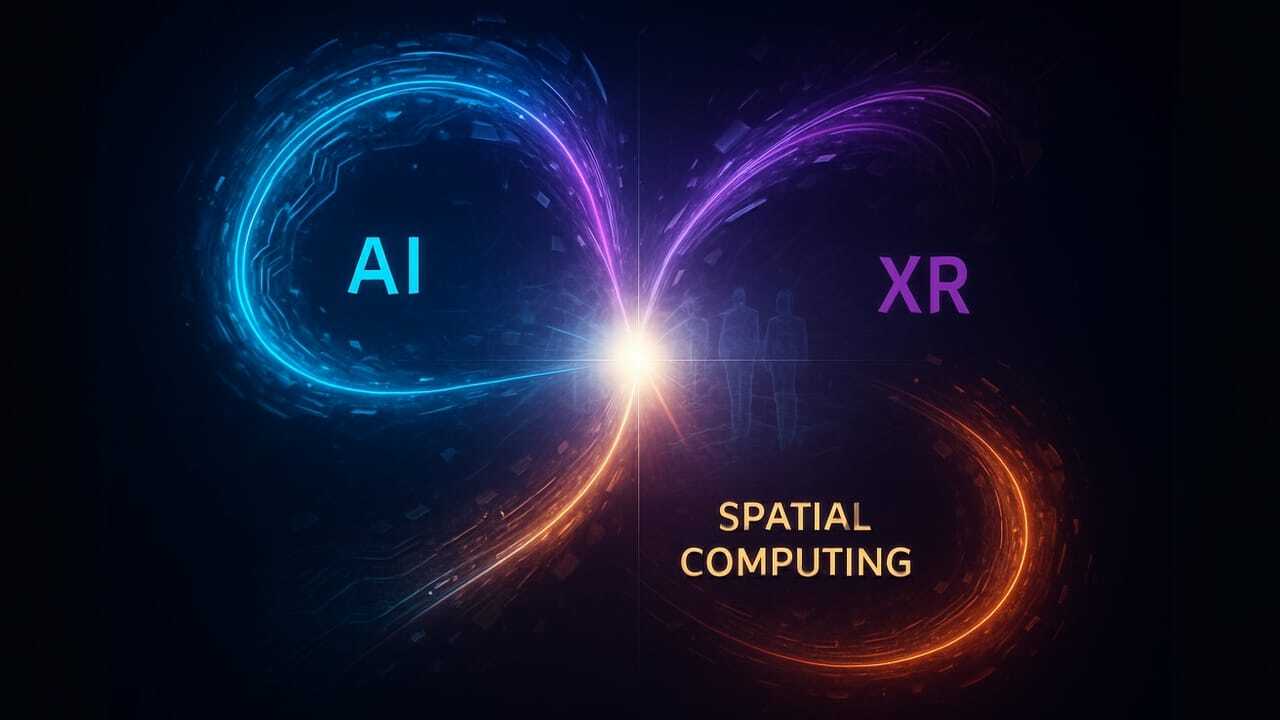- XR Insider
- Posts
- The AI Convergence: When XR Video Starts Thinking for Itself
The AI Convergence: When XR Video Starts Thinking for Itself
From gaze tracking to emotion recognition, discover how companies are using AI to make virtual experiences listen, learn, and respond in real time

What if the next video you watched could see you, listen to you, and adapt to you in real time?
Picture stepping inside a video that changes its story based on what you do, say, or feel. A training simulation that reads your confidence level and adjusts the difficulty. A product demo that tailors itself to your gaze and voice. A virtual meeting where the environment responds to emotion in real time. This is the new frontier of AI-driven XR video—where generative intelligence merges with spatial computing to create adaptive, living experiences.
And if you read until the end, you’ll see three real-world examples of how companies are already using this technology—and how you can too.
Your Boss Will Think You’re an Ecom Genius
You’re optimizing for growth. You need ecom tactics that actually work. Not mushy strategies.
Go-to-Millions is the ecommerce growth newsletter from Ari Murray, packed with tactical insights, smart creative, and marketing that drives revenue.
Every issue is built for operators: clear, punchy, and grounded in what’s working, from product strategy to paid media to conversion lifts.
Subscribe free and get your next growth unlock delivered weekly.
From Static Scenes to Living Systems
Traditional XR video was immersive but fixed—a 360-degree environment you could look at but not change.
AI has shattered that boundary. New generative models can extend scenes beyond what was filmed, animate characters dynamically, and re-render entire environments based on context.
Platforms like Runway Gen-3 Alpha, Pika 1.0, and Sora now allow creators to generate entire XR sequences from text prompts, while Nvidia ACE brings conversational avatars that think and react inside virtual spaces.
The result: worlds that evolve, not loops that repeat.
VR Tool of the Week: XR Design Studio (by XR Guru Creator Platform)
A no-code authoring tool that lets you design XR experiences (AR + VR) using drag-and-drop templates, real-time previews, and publish-to-multiple-devices capability.

Key Specs & Stats:
🧠 AI Scene Builder: Generates adaptive 3D environments from text prompts using GPT-4 Vision and OpenAI Embeddings.
⚙️ Supported Formats: FBX, GLB, MP4, and USDZ — fully compatible with Unreal Engine 5 and Unity XR pipelines.
🚀 Performance: Renders real-time previews at 90 FPS in VR and 120 FPS on desktop with NVIDIA RTX support.
🌐 Cross-Platform Deployment: Publish directly to Meta Quest 3, Apple Vision Pro, Pico 4, and web XR browsers.
📊 Productivity Boost: Cuts XR prototype build time by up to 65% compared to traditional Unity workflows (according to internal creator analytics).
With XR + AI convergence accelerating, being able to prototype immersive content quickly (without deep engineering) gives a serious strategic advantage.
Real-Time Intelligence Meets Spatial Computing
The magic happens when these AI models plug into XR hardware and spatial frameworks.
5G and edge computing stream heavy assets instantly, while sensors track voice, gaze, and gesture to feed adaptive algorithms. That means your body becomes the interface—and every movement, expression, or word reshapes the experience. Companies like YORD are already building training simulations where AI monitors employee reactions and modifies the scenario live.
What used to be scripted is now generative. What used to be linear is now alive.
HUGE XR NEWS (from last week)
Samsung and Google officially launched the Galaxy XR mixed-reality headset, built on the new Android XR platform with the Gemini AI assistant embedded at the system level. (learn more)
News breaks this week of the broader implications: analysts flag privacy and regulatory concerns as AI-powered XR glasses move from labs to real-world use (e.g., wearables that record and respond). (learn more)
The XR Sports Alliance (XRSA) added 6 new global members—including major sports franchises—accelerating immersive video and fan-engagement workflows in live sports. (learn more)
A recent article on immersive workplace learning shows that combining XR and AI is becoming the dominant mode for skill development, especially in manufacturing and safety training. (learn more)
Researchers published a new paper titled “XR Blocks,” which proposes a modular open-source framework for merging AI and XR in rapid prototyping environments. (learn more)
Why It Matters for Business
This convergence marks the birth of smart media—content that doesn’t just inform, it interacts.
For founders and executives, that means three things:
Engagement: Personalized experiences hold attention longer and boost retention.
Efficiency: Adaptive video reduces production cycles and training costs.
Scalability: Cloud-rendered XR can reach global teams instantly.
In other words, the companies that adopt this early will own the attention economy of the next decade.

Real-World Momentum: AI + XR in Action
Siemens is piloting immersive XR training modules where spatial video walkthroughs adjust in real time to technician feedback and sensor data. (Learn more)
Nike is exploring adaptive product-demo environments that blend XR video and AI cues to tailor virtual try-ons and test experiences based on user behavior. (learn more)
Holoride (backed by Audi) has transformed car interiors into motion-aware XR theaters, where every movement reshapes the visual narrative. (learn more)
AI-powered XR isn’t a distant promise anymore—it’s happening right now across industries from manufacturing to retail to mobility.
If you’re ready to explore how this technology can cut costs, engage teams, or reimagine your product experience, let’s talk.
That’s a wrap!!
Talk soon!
Bruno Filkin
Founder, Mastermind VR
VR Strategy Consultation
Ready to explore VR training for your team?
Take the Next Step
Let us review your project and discuss possible development and production details.
👇🏼
How would you rate this episode? |


